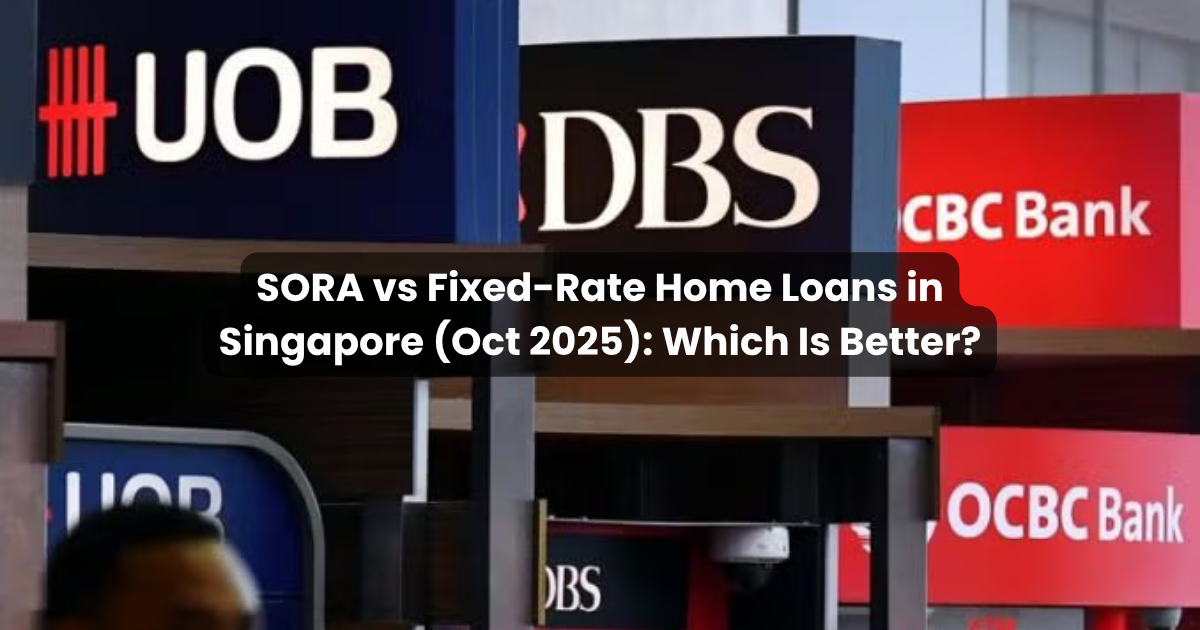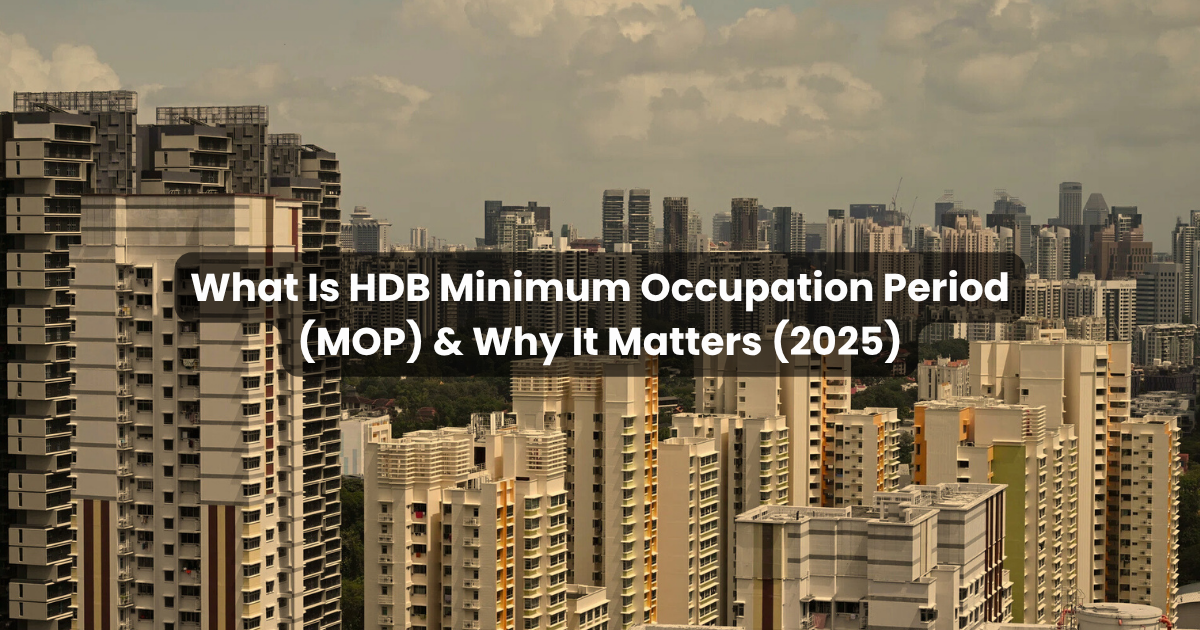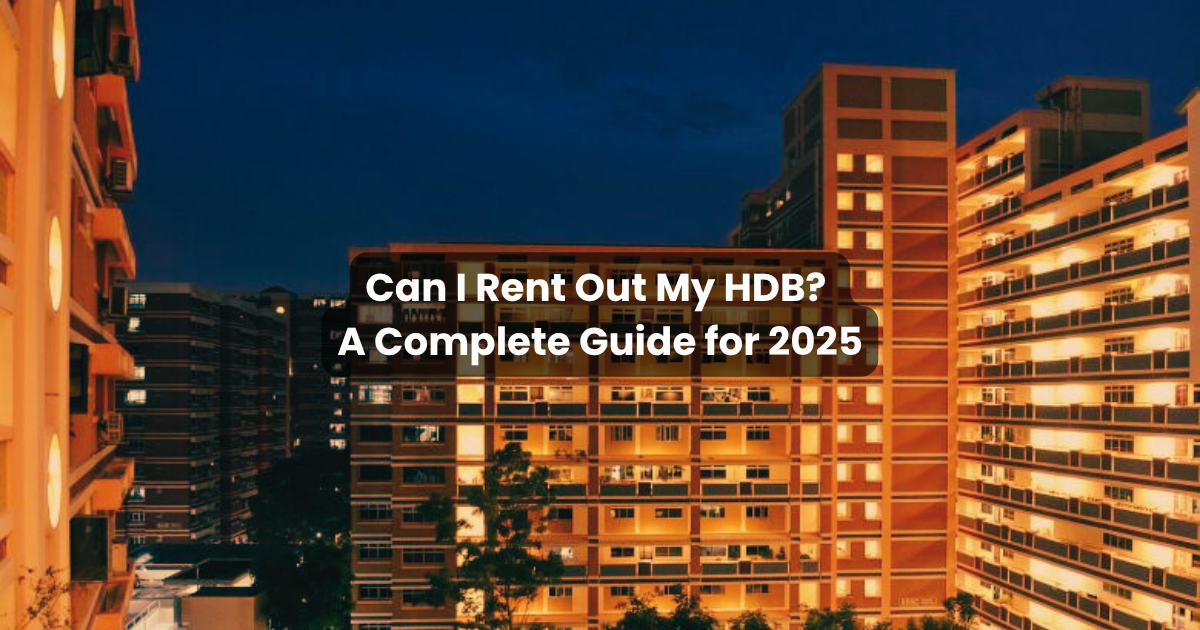- Insights & Updates
Latest News
By Chief Analyst
October 1, 2025Home financing in Singapore has always been sensitive to global interest rate cycles, but in 2025 the choice between a SORA-pegged floating loan and a fixed-rate package feels particularly acute. On the one hand, the Singapore Overnight Rate Average (SORA) has fallen steadily since early 2025, reflecting softer US Federal Reserve policy and a cooling domestic economy. On the other, certain banks are now offering fixed-rate packages at unusually low levels, such as 1.50% for two years with a free conversion option after twelve months, though only for loan sizes above S$2 million.
Borrowers are thus confronted with a difficult but consequential decision: do they lock in certainty at 1.50%, or do they ride the SORA curve with a spread of +0.25% and hope that rates drift lower still?
To answer this, one must first understand where SORA stands today, what the economic outlook suggests about its trajectory, and how fixed packages are structured. This essay will then evaluate the relative merits of each approach, draw on plausible one-year scenarios, and provide guidance tailored to different borrower profiles.
The Current Rate Environment
At the start of October 2025, MAS data places the compounded one-month SORA at about 1.38% and the three-month SORA at roughly 1.45%. Adding a typical spread of 0.25% gives effective floating rates of around 1.63% for one-month resets and 1.70% for three-month resets. By contrast, the fixed rate on offer from certain banks is 1.50% for two years, with an embedded feature that allows borrowers to switch to another package within the same bank after twelve months without penalty.
This means that today, the fixed rate is actually cheaper than floating, even before considering its value as insurance against volatility. However, the calculus changes if one expects SORA to continue sliding downwards over the next twelve months.
Why SORA Has Declined in 2025
SORA’s decline since January 2025 can be traced directly to the path of US monetary policy. After holding rates high through much of 2024, the US Federal Reserve finally began cutting in early 2025 as inflation slowed and growth concerns mounted. By September 2025, the Federal Open Market Committee had lowered its target range to 4.00 – 4.25%, with forward guidance that further trims were possible but not guaranteed. This cautious stance “cut, but carefully”, has kept market expectations of interest rates in a gradual downward channel.
Singapore’s monetary policy is not conducted through domestic interest rates but through management of the exchange rate, the S$NEER. Even so, local interest rates such as SORA move in sympathy with US dollar funding conditions, which means the Fed’s easing path directly influences Singaporean borrowers. At the same time, MAS has acknowledged cooling domestic growth and softer core inflation, both of which reduce the need to lean against demand with tight liquidity. Taken together, the result has been a progressive easing of SORA across 2025.
One-Year Outlook: Oct 2025 to Oct 2026
The most pertinent question for borrowers is what happens over the next twelve months. Several scenarios can be outlined.
The base case, consistent with Fed communications and market pricing, is that SORA will average somewhere in the 1.1% to 1.6% range for one-month compounded, and 1.2% to 1.7% for three-month compounded. This reflects the expectation that the Fed delivers perhaps one or two further 25 basis point cuts by mid-2026, while inflation remains sticky enough to prevent an aggressive easing cycle. Singapore’s economy is expected to grow modestly, keeping MAS policy steady.
A more optimistic scenario for floating borrowers is the bull case, in which US data softens faster than expected. If labour markets loosen more quickly and inflation recedes convincingly, the Fed could accelerate cuts, pulling SORA towards the 0.8% to 1.1% zone. In this environment, borrowers on floating packages would see effective mortgage rates fall close to 1.05–1.35% inclusive of spread, comfortably below the current fixed 1.50%.
Conversely, the bear case must be acknowledged. If inflation proves stubborn or if new shocks, such as tariffs, commodity price spikes, or geopolitical disruptions, keep US rates elevated, the Fed may slow or pause its easing after just one further cut. Under such circumstances, SORA could hover in the 1.5% to 1.9% range for one-month resets, and 1.6 to 2.0% for three-month. Floating borrowers would then pay closer to 1.8 to 2.2% all-in, significantly worse than locking in 1.50%.
Comparing Fixed and Floating
When comparing the two options, it is important to remember that the fixed-rate package on offer is not an ordinary two-year fix. The free conversion feature at month twelve fundamentally changes its risk profile. Borrowers start with certainty at 1.50% for the first year. If, by month twelve, SORA has fallen such that SORA + 0.25% is lower than 1.50%, they may switch without cost. If SORA has not fallen enough, they simply retain the 1.50% into year two.
This makes the product structurally advantageous. It functions as a one-way option: heads, the borrower wins (by switching to a cheaper floating rate); tails, the borrower does not lose (they remain at a rate that is already cheaper than the floating alternative today).
Floating Loans: When Do They Make Sense?
That said, floating packages remain attractive for certain profiles. Borrowers who are comfortable tracking rates closely, who believe strongly in the bull case for aggressive Fed cuts, and who are prepared to stomach short-term volatility may prefer SORA-pegged loans. One-month resets in particular will transmit lower rates faster than three-month, though the price of this immediacy is higher volatility if rates turn back up.
For investors with shorter horizons, such as those planning to sell within a year or two, the flexibility of floating packages can also be appealing, especially if the loan quantum is smaller and the cost difference is less material. However, they must be mindful of lock-in clauses, clawbacks of subsidies, and prepayment penalties linked to rate review dates.
Who Should Choose Fixed?
For most owner-occupiers and especially those with large loans, the fixed-rate package with free conversion stands out as the more prudent option. It provides immediate savings compared to current floating rates, guarantees predictability for at least twelve months, and embeds an option to benefit if the rate environment shifts decisively downward. Families budgeting tightly for education or retirement costs, landlords seeking stable cashflow against rental income, and anyone averse to interest rate volatility will find this structure reassuring.
It is important, however, to read the fine print. Borrowers must confirm whether the free conversion applies only to internal repricing within the same bank and what menu of packages will be available at that time. They should also understand whether a new lock-in period begins upon conversion, and whether subsidy clawbacks could be triggered if they refinance externally soon after.
Broader Considerations
Beyond the headline comparison of rates, other considerations matter when making a refinancing or repricing decision. Total Debt Servicing Ratio (TDSR) requirements remain capped at 55%, meaning that any increase in monthly obligations could affect eligibility. Borrowers must also consider their medium-term property plans. If a sale is contemplated within the next few years, choosing a package with minimal lock-ins is essential. If additional liquidity might be required, private property owners can contemplate equity term loans, though these too must pass TDSR checks.
(Read more about refinancing here)
Conclusion
The question of whether SORA or fixed rates are better in October 2025 ultimately depends on one’s outlook for global rates and personal risk tolerance. The empirical evidence today is that SORA has declined substantially from its early-2025 highs, but the Federal Reserve remains cautious, cutting only slowly. MAS data show floating rates at about 1.6 – 1.7% all-in, which is already above the fixed rate of 1.50%. With a free conversion option at month twelve, the fixed-rate package is essentially a low-risk, high-optionality choice that protects borrowers in the base and bear cases while allowing them to benefit in the bull case.
Floating packages retain appeal for the rate-savvy, for those convinced of faster US easing, and for borrowers who value maximum flexibility. But for the majority, especially large loan borrowers and families seeking peace of mind, the current fixed rate stands out as the more compelling option.
As always, borrowers should keep a close watch on MAS publications, FOMC statements, and bank repricing menus, since these will determine whether to exercise the conversion feature when the time comes. In a market defined by uncertainty but trending gently downward, the prudent path is often the one that balances certainty with optionality, and in October 2025, that path looks very much like the 1.50% fixed with free conversion.
Explore related content by topic
Your circumstances, total loan quantum, income stability, HDB vs private, expected sale or upgrade horizon, should guide your choice
We provide expert BUC home loan comparisons, discover the best BUC loan interest rates across major banks like DBS, UOB, Standard Chartered, Maybank, Citibank, HSBC, CIMB Bank and OCBC.






